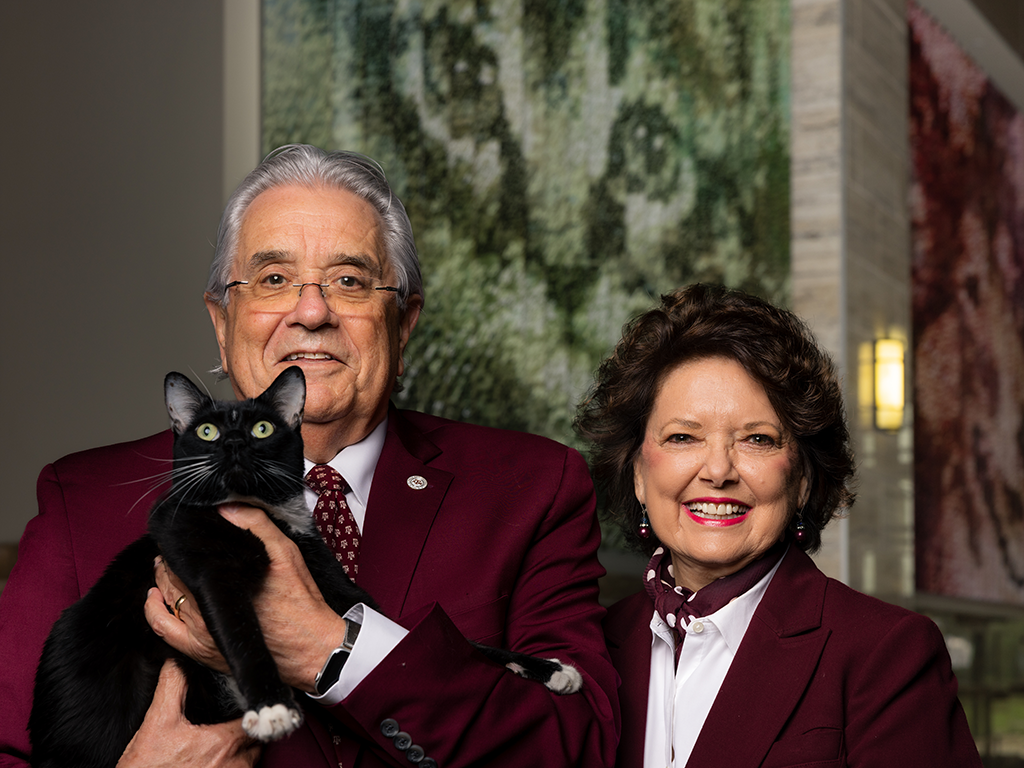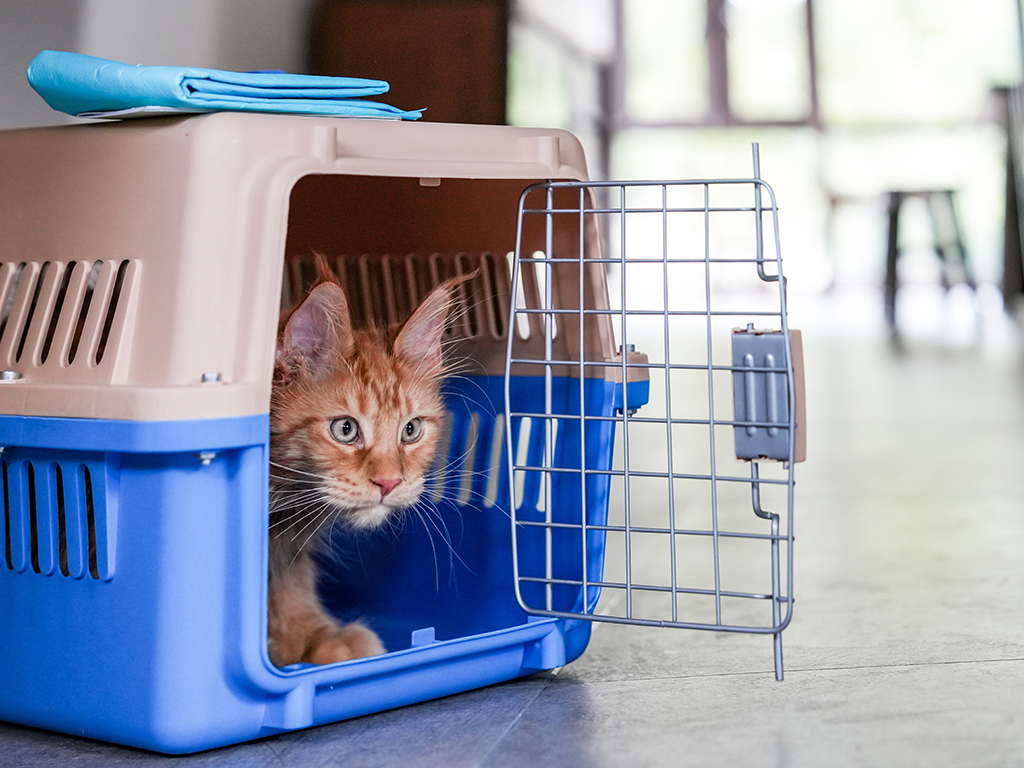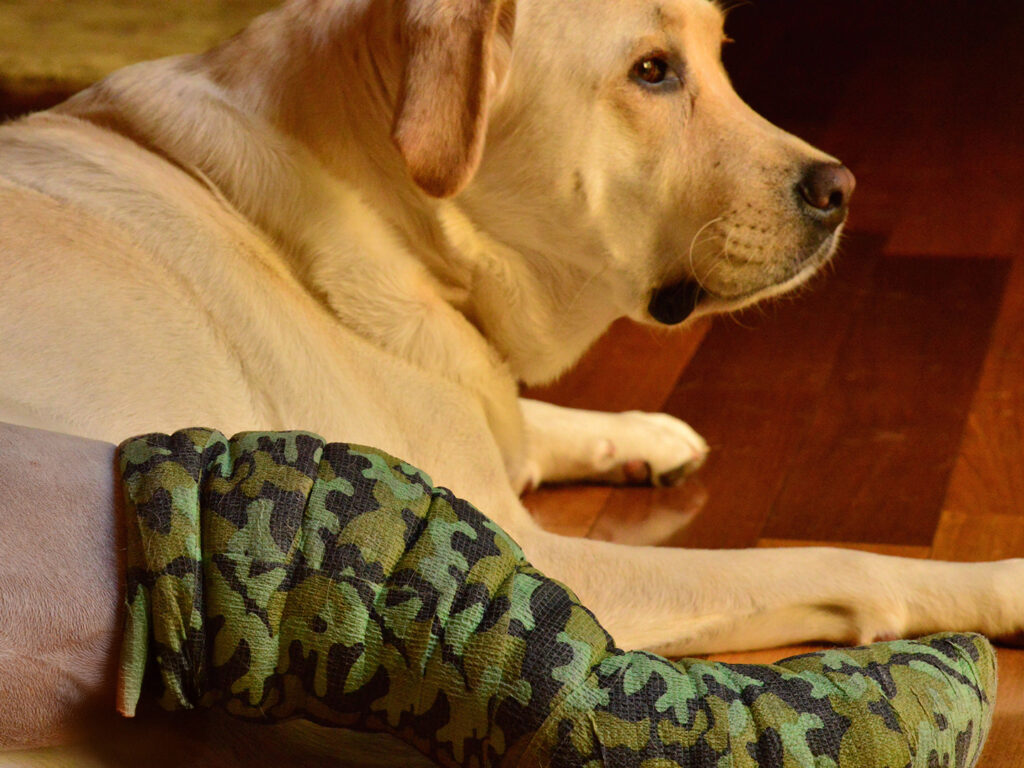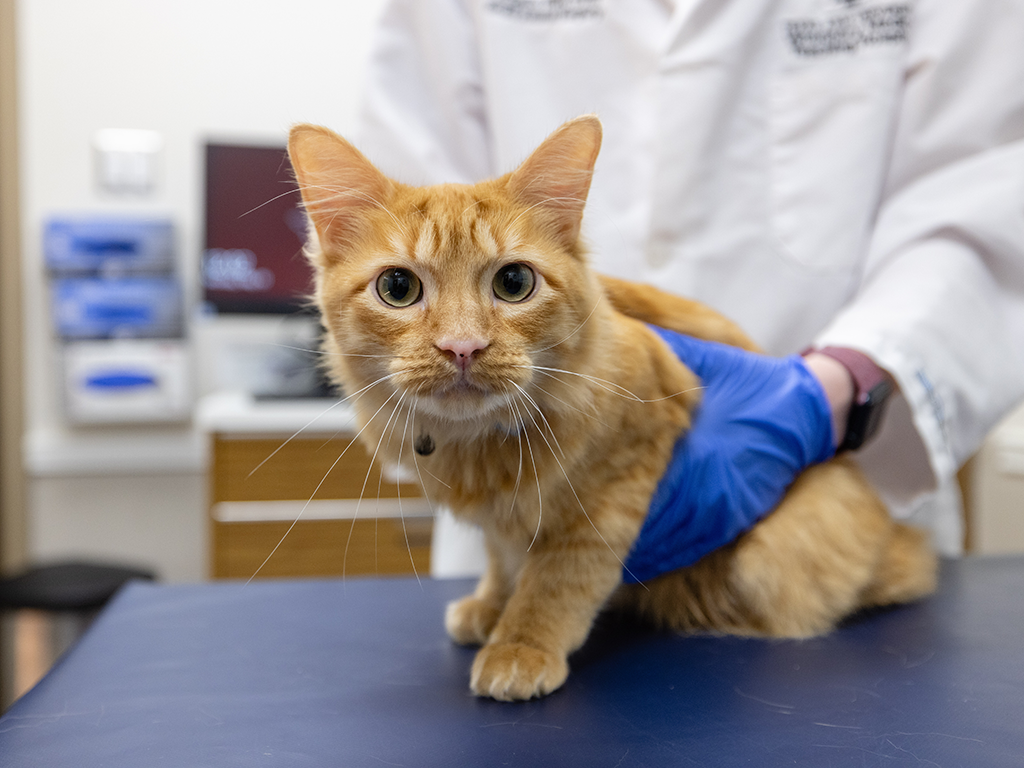Standing Together For The Future Of Feline Health
Story by Ainsley Treesh, VMBS Marketing & Communications
Texas A&M Veterinary Medical Teaching Hospital clinicians provided lifesaving care for the university provost’s cat.

As Texas A&M University Provost, Dr. Alan Sams leads and supports the academic mission of the university through spearheading strategic initiatives that elevate educational quality and drive impactful research.
Like his owner, Fergus Sams — a 4-year-old ginger male cat — is helping lead the knowledge of an under-recognized kidney disease in cats at the Texas A&M Small Animal Teaching Hospital (SATH).
When Fergus began to lose weight and became anemic, Sams turned to the SATH, where Texas A&M’s team of dedicated veterinarians diagnosed him with a specific type of kidney disease. In partnership with collaborators across the country, his team worked diligently to develop a treatment plan, while learning how to better treat future patients.
Finding Fergus
Sams and his wife, Gretchen ’90, first brought Fergus and his twin brother, Fitz, home in the fall of 2021. The couple had recently moved to Oregon and, after settling in as empty nesters they wanted a ginger male cat.
“We found two gingers that were brothers at a local rescue, so we got both of them,” Sams said. “They were a package deal.”
At home, Fergus and Fitz are polar opposites.
“Fergus is very lovey and cuddly, but Fitz is like a cheetah and always on the move,” Sams said.
During the spring of 2024, Sams noticed Fergus looked thinner and wasn’t as active as usual. Sams took Fergus to South 40 Veterinary Hospital, the family’s primary care veterinarian, where Dr. Ryan Lee ’98 discovered that Fergus’ weight loss was more significant than they had suspected.
Lee ran some preliminary tests; however, he was unable to determine the cause of his health issues, so he referred Fergus to the SATH.
A Medical Mystery

Upon arrival at the SATH, the Internal Medicine Service began to determine the cause of Fergus’ discomfort. Dr. Andrea Huther, a third-year resident in internal medicine, has been on Fergus’ case since the beginning and took special interest in the complex issues he was facing.
“When we first saw Fergus, he was losing weight, not feeling well, had elevated kidney values, and was anemic,” Huther said. “He was so anemic we had to perform a blood transfusion during his first visit. That is when we noticed his urine protein levels were elevated, signaling to us he had a significant kidney disease, specifically a protein-losing nephropathy.”
The team began investigating Fergus’ condition by running several infectious disease tests, but the results came back negative. Huther then began researching published medical cases and came across a paper about a kidney immune-mediated disease in cats, which is when the body’s cells mistakenly attack healthy cells for an unknown reason.
“Fergus’ presentation fit with the young male cats described in the paper that had what we call an immune-complex glomerulonephritis, or kidney syndrome,” Huther said. “There is not yet much described about this disease in cats; we relied on this paper for reference.”
From the research, the internal medicine team began treating Fergus with immunosuppressive therapies and additional treatments for the protein he was losing in his urine.
“The treatment was a trial because we didn’t know much about Fergus’ specific disease without a kidney biopsy,” Huther said. “Luckily, Fergus responded well to treatment in the following months.”
In October 2024, as Fergus’ health continued to improve, the internal medicine team discussed weaning down his immunosuppressive medication because of its potential side effects. Since Fergus’ disease was under control, the team hoped to shift its focus to long-term management.
However, the risk of the unknown was still pressing, so Huther consulted with Dr. JD Foster, a veterinarian who specializes in kidney diseases.
“Since we are still learning more about protein-losing nephropathy diseases in cats, I wanted to get guidance from a kidney specialist on how to manage the disease long-term,” Huther said. “Dr. Foster was incredibly helpful and willing to help us determine the best plan to manage Fergus’ disease.”
As they slowly began weaning Fergus off his medications, he maintained healthy kidney and protein values.
“Fergus has gained weight back and significantly improved his kidney value levels,” Huther said. “Going forward, we will continue to keep an eye on him, but he is doing well now.”
Helping Future Patients

Fergus’ successful treatment has not only allowed him to return home healthy, but may also help future cats with the same issue. Since there is still a lot to be known about immune-mediated glomerulonephritis diseases in cats, Fergus’ treatment is serving as a model for future patients with similar symptoms and diagnoses.
“Seeing how well Fergus is doing helped us realize the prognosis for this disease may not always be as grim as we originally thought,” Huther said.
Currently published research has indicated that the average prognosis for cats with this disease is only about a year. However, Fergus has exceeded this prognosis, and his success is a testament to the exemplary care provided by veterinarians at the SATH.
“I’m often amazed by what I get to see between my fellow residents and clinicians,” Huther said. “We are all trying to advance our knowledge and not just accept the status quo; whether that is through reading literature, conducting clinical trials, or reaching out to colleagues both nationally and internationally, we all just want to benefit our patients.”
For Sams, the dedication of the staff, students, and veterinarians at the SATH is an incredible asset to the community.
“As members of the A&M community, it makes us proud that Fergus is helping other cats who may come down with this disease,” Sams said. “Contributing to the knowledge of this disease is exciting, but at the end of the day it’s really personal because of what our animals mean to us.
“The teaching hospital does a great job of finding the balance between personal care for owners and their pets and providing high-tech, research-driven, state-of-the-art healthcare,” he said.
###
For more information about the Texas A&M College of Veterinary Medicine & Biomedical Sciences, please visit our website at vetmed.tamu.edu or join us on Facebook, Instagram, and Twitter.
Contact Information: Jennifer Gauntt, Director of VMBS Communications, Texas A&M College of Veterinary Medicine & Biomedical Sciences, jgauntt@cvm.tamu.edu, 979-862-4216








